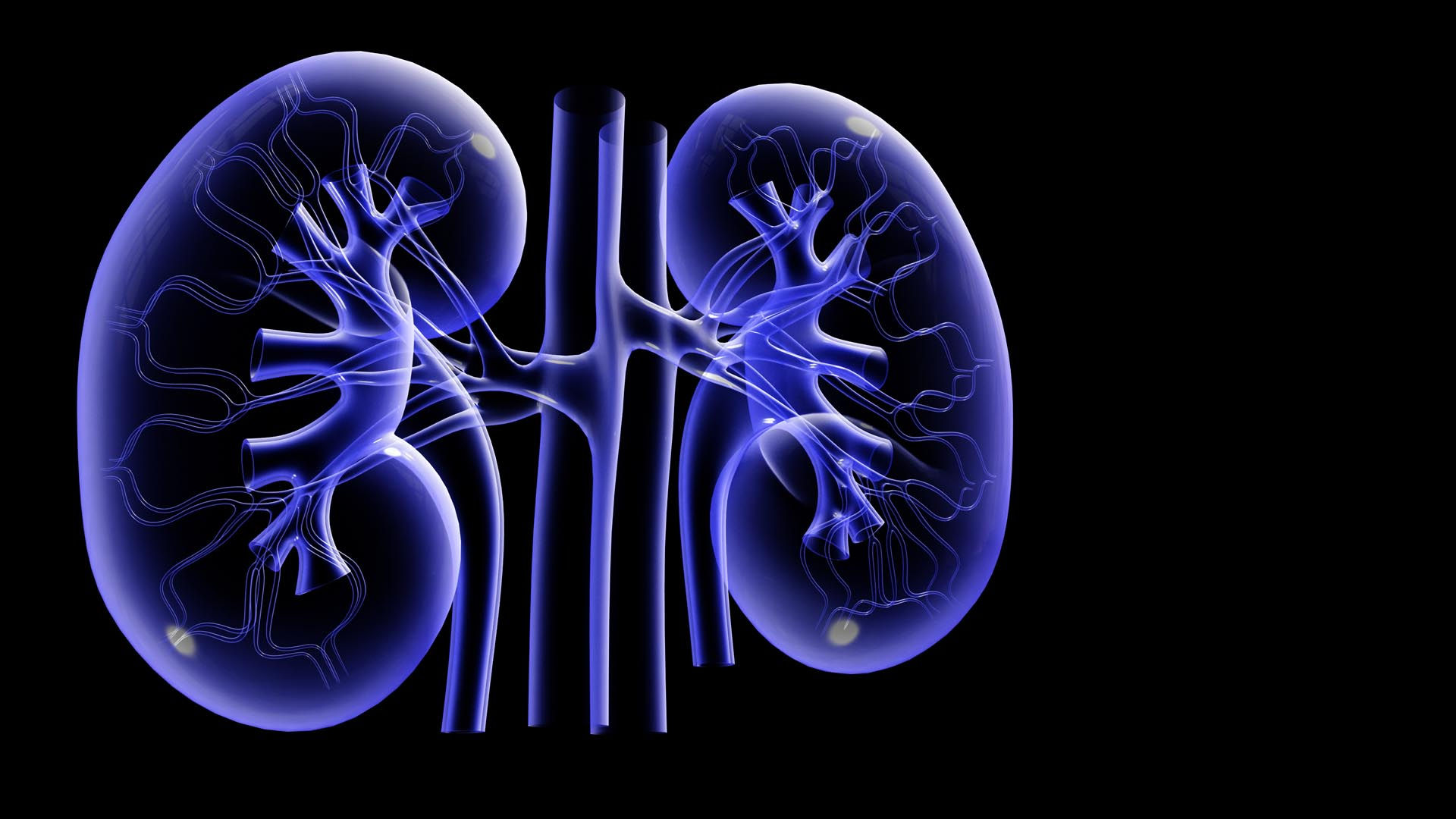
Functions of the Kidney
Regulation of ion levels in the blood. The kidneys help regulate the blood levels of several ions. The most important are sodium ions (Na), potassium ions (K), calcium ions
(Ca2), chloride ions (Cl), and phosphate ions (HPO42).
Regulation of blood volume and blood pressure. The kidneys adjust the volume of blood in the body by returning water to the blood or eliminating it in the urine.
They help regulate blood pressure by secreting the enzyme renin, which activates the renin–angiotensin–aldosterone system (RAAS); by adjusting blood flow into and out of the kidneys; and by adjusting blood volume by the water resorption processes.
Regulation of blood pH. The kidneys regulate the concentration of H+ in the blood by excreting a variable amount of H+ in the urine. They also conserve blood bicarbonate ions (HCO3), which buffers H+.
Production of hormones. The kidneys produce two hormones: Erythropoietin, which stimulates production of red blood cells by the bone marrow; and Calcitriol, the active form of vitamin D, helps regulate calcium homeostasis.
Excretion of wastes. By forming urine, the kidneys help excrete wastes which result from metabolic reactions in the body: ammonia and urea from the breakdown of amino acids; bilirubin from the breakdown of hemoglobin; creatinine from the breakdown of creatine phosphate in muscle fibers; and uric acid from the breakdown of nucleic acids. Other wastes excreted in urine are foreign substances from the diet, such as drugs and environmental toxins.
Urine Formation
Step 1: Glomerular Filtration
Glomerular filtration is a passive process in which hydrostatic pressure forces fluids and solutes through a membrane. The pressures that govern filtration from the glomerulus result in an outward Net Filtration Pressue (NFP) as shown in the illustration.
Outward Pressure:
The hydrostatic pressure in glomerular capillaries (HPgc) is effectively glomerular blood pressure. It pushes water and solutes out of the blood and across the filtration membrane. The blood pressure in the glomerulus is approximately 55 mm Hg (very high compared to a typical 26 mm Hg in other capillary beds) and it remains high across the entire capillary bed.
Inward Pressures:
The hydrostatic pressure in the capsular space (HPcs) is the pressure exerted by filtrate in the glomerular capsule. HPcs is much higher than hydrostatic pressure surrounding most
capillaries because filtrate is confined in a small space with a narrow outlet.
The colloid osmotic pressure in glomerular capillaries (OPgc) is the pressure exerted by the proteins in the blood.
Renal Function and the Control System
The basic aspect of kidney functions, the function of nephron and the diffusion of solutes taking place in the nephron. The chemical composition of urine.


Glomerular Filtration Rate
The Glomerular Filtration Rate (GFR) is the volume of filtrate formed each minute by the combined activity of all glomeruli of the kidneys. GFR is directly proportional to each of the following factors:
Net filtration pressure. NFP is the main controllable factor. Of the pressures determining NFP, the most important is hydrostatic pressure in the glomerulus. This pressure can be controlled by changing the diameter of the afferent (and sometimes the efferent) arterioles.
Total surface area available for filtration. Glomerular capillaries have a huge surface area (collectively equal to the surface area of the skin). Glomerular mesangial cells surrounding these capillaries can fine-tune GFR by contracting to adjust the total surface area available for filtration.
Filtration membrane permeability. Glomerular capillaries are thousands of times more permeable than other capillaries because of their fenestrations.

Two types of controls serve these two different needs. Intrinsic controls (renal autoregulation) act locally within the kidney to maintain GFR, while extrinsic controls by the nervous and endocrine systems maintain blood pressure.
In extreme changes of blood pressure (mean arterial pressure less than 80 or greater than 180 mm Hg), extrinsic controls take precedence over intrinsic controls in an effort to prevent damage to the brain and other crucial organs.
GFR can be controlled by changing a single variable
glomerular hydrostatic pressure. All major control mechanisms act primarily to change this one variable. If the glomerular hydrostatic pressure rises, NFP rises and so does GFR. If the glomerular hydrostatic pressure falls by as little as 18%, GFR drops to zero.
Urine Formation
Step 2: Tubular Reabsorption
Tubular reabsorption is a selective transepithelial process that begins as soon as the filtrate enters the proximal tubules. Depending on the substances transported, the reabsorption process may be active or passive. Active tubular reabsorption requires ATP either directly (primary active transport) or indirectly (secondary active transport) for at least one of its steps. Passive tubular reabsorption includes diffusion, facilitated diffusion, and osmosis processes in which substances move down their electrochemical gradients.

Urine Formation
Step 3: Tubular Secretion
The most important way to clear plasma of unwanted substances is to simply not reabsorb them from the filtrate. Another way is tubular secretion—essentially, reabsorption in reverse. Tubular secretion moves selected substances (such as H+, K+, NH4+, creatinine, and certain organic acids and bases) from the peritubular capillaries through the tubule cells into the filtrate.
Disposes certain drugs and metabolites that are tightly bound to plasma proteins.
Eliminates undesirable substances or end products that have been reabsorbed by passive processes, including nitrogenous wastes urea and uric acid.
Removes excess K+.
Controls blood pH—when blood pH drops toward the acidic end of its homeostatic range, the renal tubule cells actively secrete more H+ into the filtrate and retain and generate more HCO3+ (a base).


[Marieb, page 973]
[Marieb, page 977]